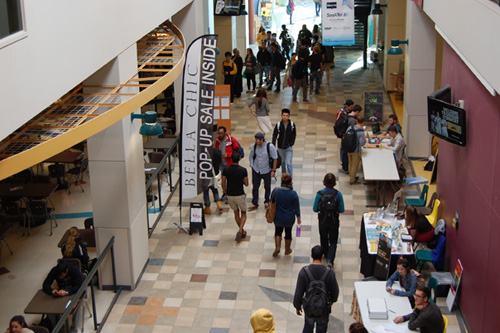A report released by Statistics Canada has labeled Saskatchewan as the province with the highest increase in tuition, which has many people shaking their heads.
Tuition for the 2014-2015 year has increased by four per cent in the province for undergraduate students and over five per cent for graduate students. The report also states that students in Saskatchewan pay the second-most overall, next to those in the province of Ontario.
Still, Devon Peters, University of Regina Student Union president, said these statistics should be taken with a grain of salt.
“I recognize Stats Canada’s methodologies are suspect at the very least, if not flawed,” said Peters. “If you do a university-to-university comparison we actually do reasonably well.”
Peters said the numbers are skewed because there is a smaller student population in the province.
The report factors in specialized programs with higher tuition, such as dentists and doctors, to average undergraduate tuition. This boosts the average cost of tuition substantially as there are high numbers of students enrolled in these costly programs.
Peters added that the university can only do so much with what it is given. This limits how and where administrators allocate tuition.
“The hand is often forced by the provincial government…making the decision to underfund the university,” said Peters. “So if the province says, ‘Hey, we’re not going to give you that much money,’ then there really is no other option to maintain this university (other) than to increase tuition or to make cuts to certain classes.”
“That’s directly related to the province continuing to underfund education.”
Peters said although the tuition increases are necessary this year, they are not sustainable.
“In the short term we can manage it because we know that students are getting well paying jobs because our economy’s in the boom … once that boom goes away … we’re going to be the ones that lose because at the end of the day. It’s easier to increase tuition than it is to decrease it.”
No matter how the fees compare to other universities, students are feeling the pinch.
Britnee Holfeld, a student at the U of R, said even though she pays for school mostly with scholarships, she hopes to see students raising their voices on the issue.
“It’s kind of crazy. A lot of people struggle with money as it is and then they want to get schooling but they have to pay a ridiculous amount,” said Holfeld. “I don’t think it should be as high as it is.”
Brooke Blackwell said she plans to pay off loans once she’s done her schooling. She’s not happy to see tuition increase either.
“It’s discouraging,” she said.
Blackwell said the government should be putting more funding towards education.
“What we need is more intelligence and more knowledge and the only way you can do that is having affordable education available to everyone.”
Thomas Chase, provost and vice-president (academic) is responsible for all academic operations at the University of Regina.
He agrees that the smaller university community in the province, sitting at roughly 35,000 students between U of R and U of S, makes the numbers less reliable.
He said the U of R website also includes most of the fees, except Student Union fees, instead of just tuition costs.
“We like to be very up-front in what we’re charging students,” said Chase. “Other universities don’t include the mandatory fees that students have to pay anyway.”
Chase said if the universities were compared based on total cost, the U of R would rank the eighteenth least expensive out of 59 English-language Canadian universities.
“We try to ensure that what you see here on our tables is as close to the actual price as possible.”
According to Chase, the university has three main sources of revenue: the operating grant from the Government of Saskatchewan provides 55 per cent of funding, tuition provides 30 per cent and research provides the rest.
As far as costs, 80 per cent is salaries and benefits to faculty and staff, while the other 20 per cent goes to operating costs.
Chase said every year they make a strong case for the government to increase the grant.
“At the same time, we’ve got to realize that we are competing for those public funds with things like the health care system, with the highways system, with the justice system, with social services, everything else that the province spends it’s money on,” he said.


